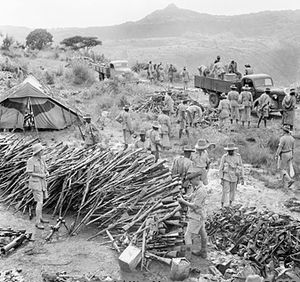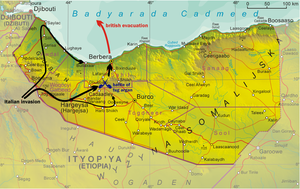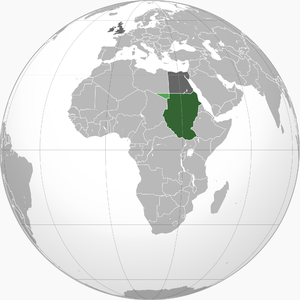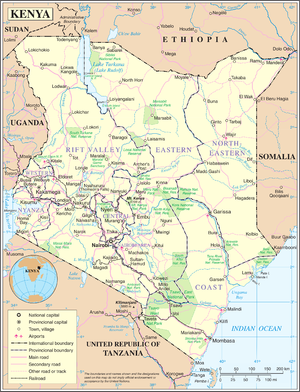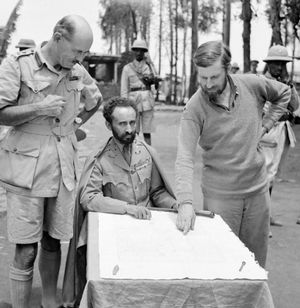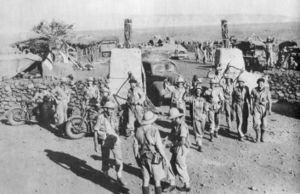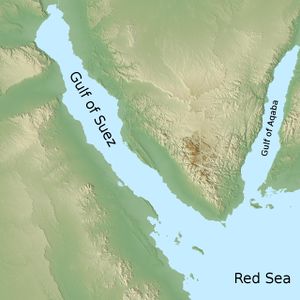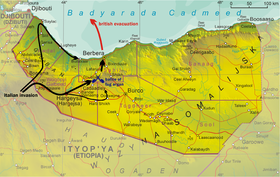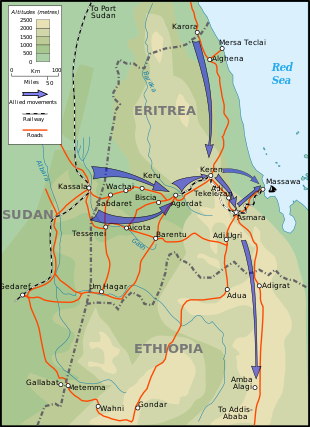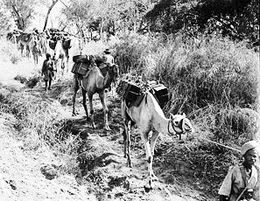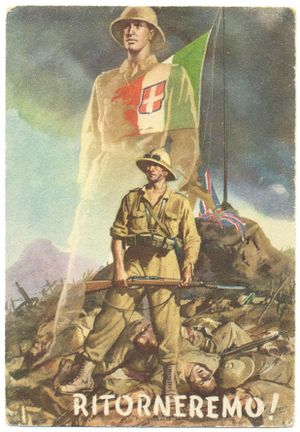حملة شرق أفريقيا (الحرب العالمية الثانية)
| ||||||||||||||||||||||||||||||
حملة شرق إفريقيا سلسلة من المعارك وقعت في شرق أفريقيا في يونيو 1940 و نوفمبر 1941 خلال الحرب العالمية الثانية بين القوات الإيطالية وقوات الحلفاء بقيادة بريطانيا. قيادة الشرق الأوسط البريطانية مع قوات من المملكة المتحدة وجنوب أفريقيا والهند البريطانية ومحمية أوغندا وكينيا وأرض الصومال وغرب أفريقيا وروديسيا الشمالية والجنوبية، السودان و نياسالاند شاركت في الحملة. وهؤلاء انضم إليهم الحلفاء القوة العامة من الكونغو البلجيكي، وأربگنوچ (قوات المقاومة) الإثيوپية الامبراطورية وووحدة صغيرة من الفرنسيين الأحرار.
شرق أفريقيا الإيطالي دافع عنه Comando Forze Armate dell'Africa Orientale Italiana (قيادة القوات المسلحة لشرق أفريقيا الإيطالي)، مع وحدات من Regio Esercito (الجيش الملكي)، Regia Aeronautica (القوات الجوية الملكية) و ردجا مارينا (البحرية الملكية). ضمت القوات الإيطالية نحو 250,000 جندي من Regio Corpo Truppe Coloniali (الفيلق الملكي للقوات الاستعمارية)، بقيادة ضباط و ضباط صف إيطاليين. مع سيطرة بريطانيا على قناة السويس، انقطعت القوات الإيطالية عن الإمدادات والتعزيزات منذ اندلاع القتال.
في 13 يونيو 1940 وقعت غارة جوية إيطالية على القاعدة السرب 237 القوات الجوية الملكية (روديسيا) في واجير في كينيا واستمرت حتى أُجبرت القوات الإيطالية على التراجع من كينيا والسودان عبر أرض الصومال وإرتريا وإثيوپيا في 1940 ومطلع 1941. بقايا القوات الإيطالية في المنطقة استسلمت بعد معركة گوندر في نوفمبر 1941، ماعدا جماعات صغيرة خاضت حرب العصابات الإيطالية في إثيوپيا ضد البريطانيين حتى هدنة كاسيبيله في سبتمبر 1943، التي أنهت الحرب بين إيطاليا والحلفاء. كانت حملة شرق أفريقيا أول نصر استراتيجي للحلفاء في الحرب؛ قليل من القوات الإيطالية تمكن من الفرار من المنطقة ليُستخدَم في حملات أخرى و سهـَّلت الهزيمة الإيطالية، لحدٍ كبير، انسياب الإمدادات عبر البحر الأحمر إلى مصر. معظم قوات الكومنولث نـُقِلت إلى شمال أفريقيا للمشاركة في حملة الصحراء الغربية.
الخلفية التاريخية
بعد احتلال الأراضي الأثيوبية خلال الحرب الإيطالية الإثيوبية الثانية (1935-1936) أعلن بينيتو موسوليني في 9 مايو 1936 عن قيام لامبراطورية الإيطالية لشرق أفريقيا حيث دمجت الأراضي الأثيوبية المستولى عليها بالمستعمرات الإيطالية في شرق أفريقيا.
مصر كانت محايدة في الحرب العالمية الثانية ولكن وفق المعاهدة المصرية الإنكليزية يحق للانجليز احتلال مصر في حال وجود أي خطر للدفاع عن قناة السويس, اعلان إيطاليا للحرب على بريطانيا وفرنسا جعل من القوات الإيطالية خطر كامن وكان متوقع أن تكون نية موسوليني غزو مصر وقناة السويس وربما الصومال الفرنسي أو الصومال البريطاني، لكن موسوليني كان ينوي القيام بعمليات غزو من أجل الدعاية السياسية لذلك كان يتطلع كينيا وتنجانيقا واوغندا، على أي حال قائد القوات الإيطالية المركزية كان يخطط للحرب بداية 1942, في صيف 1940 لم تكون القوات الإيطالية مستعدة لغزو مناطق أفريقية.
أما البريطانيين فكانت لديهم 86,000 جندي وقوات كومونولث للتعامل مع أي نزاعات كامنة في العراق, سوريا، إيران، ليبيا وشرق أفريقيا مثل كينيا والصومال البريطاني ومناطق أخرى.
الجبهة الشمالية، 1940
الصومال البريطاني، 1940
On 3 August 1940, the Italians invaded with two colonial brigades, four cavalry squadrons, 24 M11/39 medium tanks and L3/35 tankettes, several armoured cars, 21 howitzer batteries, pack artillery and air support.[3][4] The British had a garrison of two companies of the Sudan Defence Force, two motor machine-gun companies and a mounted infantry company. Kassala was bombed and then attacked, the British retiring slowly.[4] On 4 August, the Italians advanced with a western column towards Zeila, a central column (Lieutenant-General Carlo De Simone) towards Hargeisa and an eastern column towards Odweina in the south. The SCC skirmished with the advancing Italians as the main British force slowly retired. On 5 August, the towns of Zeila and Hargeisa were captured, cutting off the British from French Somaliland. Odweina fell the following day and the Italian central and eastern columns joined. On 11 August, Major-General Alfred Reade Godwin-Austen was diverted to Berbera, en route to Kenya to take command as reinforcements increased the British garrison to five battalions.[5] (From 5–19 August, RAF squadrons at Aden flew 184 sorties and dropped 60 long ton (61 t) of bombs, lost seven aircraft destroyed and ten damaged.)[6]
On 11 August, the Italians began an attack at Tug Argan (tug, a dry sandy river-bed), where the road from Hargeisa crosses the Assa range and by 14 August, the British risked defeat in detail by the larger Italian force and its greater quantity of artillery. Close to being cut off and with only one battalion left in reserve, Godwin-Austen contacted Henry Maitland Wilson the General Officer Commanding-in-Chief the British Troops in Egypt in Cairo (Wavell was in London) and next day, received permission to withdraw from the colony. The 2nd battalion Black Watch, supported by two companies of the 2nd King's African Rifles and parties of the 1st/2nd Punjab Regiment covered the retreat of the British contingent to Berbera. By 2:00 p.m. on 18 August, most of the contingent had been evacuated to Aden but HMAS Hobart and the HQ stayed behind until morning before sailing and the Italians entered Berbera on the evening of 19 August.[7] In the final four days, the RAF flew twelve reconnaissance and 19 reconnaissance-bombing sorties, with 72 attacks on Italian transport and troop columns; 36 fighter sorties were flown over Berbera.[6] British casualties were 38 killed and 222 wounded; the Italians had 2,052 casualties and consumed irreplaceable resources.[8] (Churchill criticised Wavell for abandoning the colony without enough fighting but Wavell called it a textbook withdrawal in the face of superior numbers.)[9]
السودان الأنجلو-مصري
Anglo-Egyptian Sudan shared a 1،000 mi (1،600 km) border with the AOI, and on 4 July 1940, was invaded by an Italian force of about 6,500 men from Eritrea, which advanced on a railway junction at Kassala and forced the British garrison of 320 men of the SDF and some local police to retire after inflicting casualties of 43 killed and 114 wounded for ten casualties of their own.[10][11] The Italians also drove a platoon of No 3 Company, Eastern Arab Corps (EAC) of the SDF, from the small fort في القلابات, just over the border from Metemma, about 200 mi (320 km) south of Kassala and took the villages of Qaysān, Kurmuk, and Dumbode on the Blue Nile. From there the Italians ventured no further into Sudan, owing to a lack of fuel. They proceeded to fortify Kassala with anti-tank defences, machine-gun posts and strong-points, later establishing a brigade-strong garrison. The Italians were disappointed to find no strong anti-British sentiment among the native population.[12][13] The 5th Indian Division began to arrive in Sudan in early September 1940. The 29th Indian Infantry Brigade were placed on the Red Sea coast to protect Port Sudan, the 9th Indian Infantry Brigade was based south-west of Kassala and the 10th Indian Infantry Brigade (William Slim) were sent to Gedaref, with the divisional headquarters, to block an Italian attack on Khartoum from Goz Regeb to Gallabat, on a front of 200 mi (320 km). Gazelle Force (Colonel Frank Messervy) was formed on 16 October, as a mobile unit to raid Italian territory and delay an Italian advance.[أ]
Gallabat fort lay in Sudan and Metemma a short way across the Ethiopian border, beyond the Boundary Khor, a dry river bed with steep banks covered by long grass. Both places were surrounded by field fortifications and Gallabat was held by a colonial infantry battalion. Metemma had two colonial battalions and a banda formation, all under the command of Lieutenant-Colonel Castagnuola. The 10th Indian Infantry Brigade, a field artillery regiment, B Squadron, 4th RTR with six Infantry - and six light tanks, attacked Gallabat on 6 November at 5:30 a.m. An RAF contingent of six Wellesley bombers and nine Gladiator fighters, were thought sufficient to overcome the 17 Italian fighters and 32 bombers believed to be in range.[15] The infantry assembled 1–2 mi (1.6–3.2 km) from Gallabat, whose garrison was unaware that an attack was coming, until the RAF bombed the fort and put the wireless out of action. The field artillery began a simultaneous bombardment and after an hour changed targets and bombarded Metemma. The previous night, the 4th/ 10th Baluch Regiment occupied a hill overlooking the fort as a flank guard. The troops on the hill covered the advance at 6:40 a.m. of the 3rd Royal Garwhal Rifles followed by the tanks. The Indians reached Gallabat and fought hand-to-hand with Granatieri di Savoia and some Eritrean troops in the fort. At 8:00 a.m. the 25th and 77th Colonial battalions counter-attacked and were repulsed, but three British tanks were knocked out by mines and six by mechanical failure caused by the rocky ground.[16]
الجبهة الجنوبية، 1940
شرق أفريقيا البريطاني (كينيا)
الجبهة الجنوبية، 1941
الصومال الإيطالي
 مقالات مفصلة: العملية كانڤاس
مقالات مفصلة: العملية كانڤاس- الاستيلاء على كيسمايو ومقديشو
Amba Alagi
جنوب إثيوپيا

الصومال البريطاني، 1941
الحرب في البحر، 1941
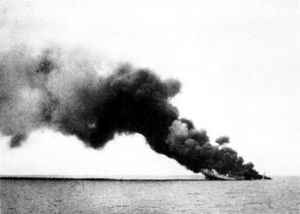
On 31 March, three of the Italian destroyers at Massawa sortied to attack shipping in the Gulf of Suez. Leone ran aground outside Massawa and had to be sunk, after which the sortie was abandoned. On 2 April, five destroyers were due to attack the fuel tanks at Port Sudan and then scuttle themselves, but reconnaissance aircraft from Aden spotted the ships. At dawn on 3 April, four were seen 20 nmi (23 mi; 37 km) east of Port Sudan by Swordfish aircraft of 813 Naval Air Squadron and 824 Naval Air Squadron FAA, from Port Sudan, which with five Blenheims of 14 Squadron RAF, sank Daniele Manin and Nazario Sauro. Pantera and Tigre were found near Jeddah, Saudi Arabia, where they were being abandoned and were destroyed by Wellesleys of 223 Squadron RAF from Port Sudan and the destroyer Kingston; Battisti had engine-trouble the night before and was scuttled. MAS-213 [(Motoscafo armato silurante] Error: {{Lang}}: text has italic markup (help), motor torpedo boat) hit the cruiser إتشإمإس Capetown escorting a convoy off Massawa before being scuttled, Capetown having to be towed to Port Sudan and then sail for Bombay for repairs.[17]
Kulkaber/Culqualber
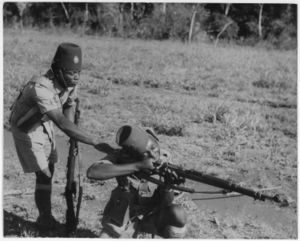
معركة قندر
الموقف العسكري
إيطاليا
تمتلك القوات الإيطالية من 250,000 إلى 280,000 جندي في شرق أفريقيا, 70% منهم من المقاتليين المحليين والذين تم تدريبهم وتسليحهم لحماية المستعمرات, وكانت الكتائب الارتيرية هي أفضل الوحدات الإيطالية في شرق أفريقيا, وتم توزيع الجيش الإيطالي إلى اربع قطاعات: القطاع الشمالي في (اسمرا، ارتيريا) والجنوبي (جيما, اثيوبيا) والشرقي على الحدود مع الصومال الفرنسي والبريطاني وقطاع جيبوا في جنوب الصومال بالقرب منكسمايو.
وتشمل معدات وتجهيزات القوات الإيطالية في شرق أفريقيا ما يلي:
- 3,300 مدفع رشاش، و813 قطعة مدفعية.
- 24 دبابة فيات إم11\39 وعدد كبير من الدبابات الخفيفة نوع (L3/35)
- 126 سيارة مصفحة
- 200 - 300 طائرة
- ويضم الاسطول الإيطالي:7 مدمرات و 5 قوارب و 8 غواصات.
بريطانيا
تتألف القوات البريطانية من 30,000 جندي في شرق أفريقيا, يتفوق الإيطاليون عليهم بالعدد إضافة إلى ذلك يوجود 208,000 جندي إيطالي في ليبيا الإيطالية، بداً من الشهر السادس بدأت تصل وحدات جنوب أفريقية وهندية إلى شرق أفريقيا, وكان البريطانيين يمتلكون 100 طائرة, اما الاسطول البريطاني فان المحيط الهندي كان يسمى بحرية بريطانية وكانت السفن البريطانية تجوبه في السلم والحرب، واعتماد بريطانيا أيضاً على ولاء أستراليا و نيوزيلاندا في هذا المجال.
إثيوبيا
بوعد من بريطانيا لتحرير اثيوبيا من الإيطاليين واعادة عرش الزعيم الاثيوبي هيلا سيلاسي والذي سافر إلى السودان للتخطيط لطرد الإيطاليين من اثيوبيا واعادة تنصيبه، تم تكوين قوات اثيوبية والتي سميت بقوة جيديون وكانت قوات غير نظامية تمتلك مدافع هاون 4، 3 بوصة و 15,000 جمل لاستخدامها في التنقل.
بدء التحركات
استيلاء الإيطاليين على بلدات حدودية سودانية وكينية
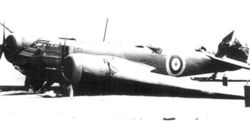
في 4 يوليو، عبرت قوة إيطالية من إرتريا الحدود السودانية وانسحبت الحامية البريطانية, خسر المدافعيين 10 رجال وخسر المهاجميين 117 رجل, استولى الإيطاليون على حصن بريطاني صغير وقرى على النيل الازرق, ومدينة غزالة لكنهم لم يستطيعوا التوغل أكثر في السودان بسبب نقص الوقود, فقاموا بتأمين الدفاعات في غزالة، لكن الإيطاليين خاب املهم عندما عرفوا بأن السكان المحليين لا يكونوا مشاعر عدائية ضد البريطانيين.
في أواخر يوليو، استولت القوات الإيطالية على حصن هارنغتون في كينيا وعلى قرى دربل وبونا (100 كيلومتر من الحدود الكينية) وهو أقصى عمق وصل اليه الإيطاليين بسبب نقص التجهيزات, وأغارت قوات ل\ارتيرية غير نظامية على بورسودان في حملة للاستيلاء على الصومال البريطاني, كان الإيطاليون يسعون للحلول محل البريطانيين في السودان وبذلك تربط مصر-السودان الإيطالية بين شمال أفريقيا وشرقها الواقعة تحت سيطرتهم.
تجمع الإيطاليين للاستيلاء على الصومال الفرنسي (ميناء جيبوتي)، الفرنسيين كانوا يملكون 7,000 رجل موزعيين على 7 كتائب, 3 بطاريات رشاشة, 4بطاريات مضادة للطائرات، تشكيلة من الدبابات الخفيفة و 4 تشكيلات من الميليشيات والقوات غير النظامية, فصيلين من فيالق الجمال، لكن بعد سقوط فرنسا وتاسيس حكومة فيشي التي أصبحت محايدة وسمحت للإيطاليين بتركيز قوتهم لهزيمة البريطانيين في الصومال البريطاني.
الغزو الإيطالي للصومال البريطاني
 مقالة مفصلة: الفتح الإيطالي للصومال البريطاني
مقالة مفصلة: الفتح الإيطالي للصومال البريطاني
في 3 أغسطس 1940، بدء الغزو الإيطالي للصومال البريطاني بقوة تتألف من 25,000 رجل مكونة من 5 ألوية من المستعمرات, 3 كتائب من ذوي القمصان السود, 3 فرق من الحشود المحلية، مسلحيين بالعربات (الدبابات الخفيفة والثقيلة)و المدفعية مع المساندة الجوية.
البريطانيين لديهم 4,000 رجل من ضمنها فيالق الجمال الصومالية المسلحة تسليح خفيف وكتائب أفريقية ومن روديسيا وأخرى من البنجاب وكان لديهم نقص في المدفعية ولاتوجد لديهم دبابات أو مصفحات أو مضادات لمواجهة الدبابات الإيطالية لذلكتراجعوا وانسحبوا باتجاه توغ ارغان.
تحت وطاة الهجمات الإيطالية انسحب البريطانييون إلى بربرا ومن هناك إلى عدن وانحلت فيالق الجمال الصومالية.
الخسائر في حملة غزو الصومال البريطاني
كانت خسائر البريطانيين قليلة:
- 38 قتيل
- 102 جريح
- 120 اسير
خسائر الإيطاليين كانت أكثر بما يقارب 10 أضعاف
- 465 قتيل
- 1530 جريح
- 2,000 من رجال القبائل المحليين بين قتيل وجريح
الهجوم المضاد للحلفاء
حاول الإيطاليون اظهار حضورهم في البحر ولكنهم دفعوا الثمن غالياً بخسارتهم 4 غواصات من أصل ثمانية.
في السودان, بدأ الهجوم البريطاني لاستعادة المواقع التي استولى عليها الإيطاليون, هجوم مفاجيء على غالابات وفي ساعات تم اليطرة عليها, رد الإيطاليون بهجوم جوي.
في اثيوبيا, احرز الجيش الاثيوبي أول انتصار بالاستيلاء على بيوك في 6 مارس 1941, وأصبح هناك سباق بين الجيش الاثيوبي والجنوب أفريقي للوصول ال أديس ابابا, اضطر المدافعون أن ينسحبوا إلى دبر ماركوس والتي اضطروا أن ينسحبوا منها في 4 أبريل.
كان الإيطاليون يمتلكون 2,000 رجل 160 منهم فقط مدربون، الطرفين كانوا يعانون من نقص في الغذاء والماء والتجهيزات الطبية, جرى اتفاق بين الجانبيين على استسلام الإيطاليين.
بدء البريطانيون مخططهم للاستيلاء على ارتيريا من السودان, وجاءت الاوامر للإيطاليين بالانسحاب إلى كيرو وواشاي حيث تبدأ السلاسل الجبلية, استولى البريطانيون على كزالة واستمروا بالتوجه شرقا وصولاً إلى اسمرة, ثم دخلوا اسمرة واسروا 5,000 رجل واستولوا على العتاد الإيطالي.
الحملة في إرتريا
كرن
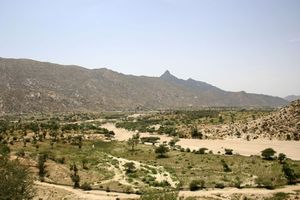
سقطت كارن في 27 مارس.[18] In the account of the battle written في Eastern Epic، تاريخ رسمي للجيش الهندي البريطاني في الحرب العالمية الثانية، يكتب كومپتون مكنزي:
Keren was as hard a soldiers' battle as was ever fought, and let it be said that nowhere in the war did the Germans fight more stubbornly than those [Italian] Savoia battalions, Alpini, Bersaglieri and Grenadiers. In the [first] five days' fight the Italians suffered nearly 5,000 casualties - 1,135 of them killed. Lorenzini, the gallant young Italian general, had his head blown off by one of the British guns. وقد كان قائداً عظيماً للقوات الإرترية[19]
The unfortunate licence of wartime propaganda allowed the British Press to represent the Italians almost as comic warriors; but except for the German parachute division in Italy and the Japanese in Burma no enemy with whom the British and Indian troops were matched put up a finer fight than those Savoia battalions at Keren. Moreover, the Colonial troops, until they cracked at the very end, fought with valour and resolution, and their staunchness was a testimony to the excellence of الادارة والتدريب العسكري الإيطالي في إرتريا.[20]
مصوع
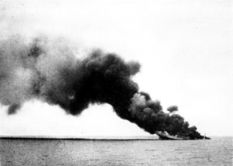
في 24 يناير, بدء غزو الصومال الإيطالي وكان الإيطاليون قد قرروا مسبقاً بأن اراضي الصومال الإيطالي لا يمكن أن تغزى, لكن مع هجوم البريطانيين مع الكتائب النيجيرية والغانية والجنوب أفريقية, انسحب الإيطاليون إلى المناطق الجبلية الاثيوبية, لم يشارك الطيران الإيطالي حيث تم تحييده من قبل القوة الجوية الجنوب أفريقية, خسر الإيطاليون 30,000 بين قتيل وجريح وممن فقدوا بين الأحراش.
في 25 فبراير 1941 تم الاستيلاء على مقديشو, وفي 6 أبريل 1941 تم تحرير اديس ابابا.
الهجوم على كسلا
آخر مواقع الايطاليين
بعد استسلام أمبا ألاگي في 18 مايو 1941، لم يتبقى للإيطاليين غير عصب، جيما وگوندر، جيما وعصب، تمتلك حامية من 40,000 رجل. سقطت عصب في 11 يونيو وجيما في 28 سبتمبر واستسلم 3,000 رجل من الحامية وگوندر سقطت في 27 نوفمبر واستسلم اخر رجاله 23,500.
الأعقاب
التحليل
In 2016, A. Stewart wrote that due to the British defeats in Greece and Crete the East African campaign has been overshadowed, although it was the first victory for the Allies in the Second World War.[21] In 2004, the American historian Douglas Porch wrote that the "pearl of the fascist regime" had lasted only five years, the performance of the Italian army exceeded that in North Africa but there had still been a high ratio of prisoners to casualties. Mass defections by local forces suggested that Fascist imperialism had made little impression on the East African public. The Italian navy at Massawa had shown a "stunning" lack of energy and failed to challenge British access to Mombasa and Port Sudan or the landing at Berbera. The army had failed to exploit British supply difficulties and had left stores behind for the British to use. The British had withdrawn the 4th Indian Division and RAF squadrons for North Africa in February 1941, despite the Italian forces remaining at Amba Alagi, which from 20 April to 15 May, were steadily pressed back until they surrendered on 19 May.[22]
Ethiopia, the Somalilands and Eritrea had been conquered by the British and the end of organised Italian resistance, led to the East Africa Force and Air Headquarters East Africa being reduced by the transfer of the South African and the two Indian divisions to Egypt, along with three fighter, three bomber and a reconnaissance squadron, followed by two more in late May. The 11th and 12th (African) divisions remained, supported by six RAF and SAAF squadrons.[23] The Italians at Galla-Sidom and Gondar were mopped up and the final surrender was taken by the Belgian contingent from Congo. Mussolini blamed the disaster on the "deficiency of the Italian race" but the Fascist regime survived and the British victory had little influence on Japanese strategy in the Far East.[22] With the Red Sea and Gulf of Aden cleared of Axis forces, President Roosevelt declared that the areas were no longer combat zones on 11 April 1941. Ships of the United States were able to proceed to the Suez Canal, which helped to relieve the strain on British shipping resources.[24]
مخابرات الإشارات
The Italians had replaced their ciphers in the AOI in November 1940 but by the end of the month, the GC&CS in England and the Cipher Bureau Middle East (CBME) in Cairo had broken the new Regio Esercito and Regia Aeronautica ciphers. By 1941, sufficient low-grade ciphers had been broken to reveal the Italian order of battle and the supply situation, by the time that the British offensive began on 19 January 1941. Italian dependence on wireless communication, using frequencies on which it was easy for the British to eavesdrop, led to a flood of information, from the daily report from the Viceroy, to the operational plans of the Regia Aeronautica and Regia Esercito on the retreat from Keren.[25] On occasion, British commanders had messages before the recipients and it was reported later by the Deputy Director Military Intelligence in Cairo, that
...he could not believe that any army commander in the field had [ever] been better served by his intelligence....
— DDMI (ME)[25]
الخسائر
On 16 April 1941, the authorities in the AOI signalled to Rome that 426 officers had been killed, 703 wounded and 315 captured, during military operations before the surrender. Casualties among NCOs and other ranks were 4,785 killed, 6,244 wounded and 15,871 captured (inclusive). Casualties among locally recruited soldiers were 11,755 dead, 18,151 wounded and 3,076 captured before the surrender; the Truppi coloniale figures did not include forces on the Giuba and eastern fronts.[26] By May 1941, of the ح. 350,000 men in the AOI available for military operations in June 1940, only the ح. 80,000 men in the garrisons near Gondar and the seven colonial divisions in Galla-Sidamo remained to be taken prisoner.[27][28] More casualties among the Italian and colonial troops occurred after April 1941, in the operations against Amba Alagi (3,500 casualties), Kulkaber/Culqualber (1,003 killed and 804 wounded) and Gondar (4,000 killed and 8,400 sick and wounded).[29][30] In 1959, I. S. O. Playfair, the British official historian, recorded that from June 1940 to May 1941, the East African Force had 1,154 battle casualties and 74,550 sickness or accident cases, including 10,000 dysentery and 10,000 malaria cases of which 744 were fatal. The RAF lost 138 aircraft; the Free French Flight N° 1 lost two Martin Marylands.[31][صفحة مطلوبة] The Regia Aeronautica lost 250 of the 325 aeroplanes in the AOI when the war began and the 75 flown to the region during the campaign. The Belgian Force Publique suffered 462 fatalities from all causes.[32]
العمليات اللاحقة
حرب العصابات
Until 27 November 1941, two African divisions mopped up pockets of resistance until the last formed Italian units surrendered.[33] From the end of 1941 to September 1943, ح. 7,000 men in scattered Italian units fought a guerrilla war from the deserts of Eritrea and Somalia to the forests and mountains of Ethiopia.[34] They supposedly did so in the hope of holding out until the Germans and Italians in Egypt (or even possibly the Japanese in India) intervened. Amedeo Guillet was one of the Italian officers who fought with the Italian guerrillas in Ethiopia. Another notable guerrilla leader was Hamid Idris Awate, a father of the Eritrean Liberation Front.[35]
Other Italian officers were Captain Francesco De Martini in Eritrea, Colonel Calderari in western Ethiopia/Somalia, Colonel Di Marco in Ogaden/British Somaliland "blackshirt centurion" De Varda in Somalia/Ethiopia and Major Lucchetti in Ethiopia. Civilians participated and in August 1942, forces led by Dr. Rosa Dainelli sabotaged the main British ammunition dump in Addis Ababa.[35] Hostilities in East Africa officially ceased on 9 September 1943, when the Italian government signed the Armistice with Italy. Some three thousand Italian soldiers continued the guerrilla war until October 1943, as they were unaware of the agreement when Italy surrendered to the Allies.[36]
ما بعد الحرب
In January 1942, with the final official surrender of the Italians, the British, under American pressure, signed an interim Anglo-Ethiopian Agreement with Selassie, acknowledging Ethiopian sovereignty. Makonnen Endelkachew was named as Prime Minister and on 19 December 1944, the final Anglo-Ethiopian Agreement was signed. Eritrea was placed under British military administration for the duration and in 1950, it became part of Ethiopia. After 1945, Britain controlled both Somalilands, as protectorates. In November 1949, the United Nations granted Italy trusteeship of Italian Somaliland under close supervision, on condition that Somalia achieve independence within ten years.[37] British Somaliland became independent on 26 June 1960 as the State of Somaliland, the Trust Territory of Somalia (ex-Italian Somaliland) became independent on 1 July 1960 and the territories united as the Somali Republic.[38] British Somaliland would later declare independence on 18 May 1991 and since then has been an autonomous internationally unrecognized state known as the Republic of Somaliland.
انظر أيضاً
- حرب العصابات الإيطالية في إثيوپيا
- التاريخ العسكري إثيوپيا
- الإنتاج العسكري خلال الحرب العالمية الثانية
- التاريخ العسكري لإيطاليا أثناء الحرب العالمية الثانية
- حملة شمال أفريقيا
- حملة الصحراء الغربية
- حملة سوريا-لبنان
- حملة غرب أفريقيا (الحرب العالمية الثانية)
- معركة مدغشقر
- لازلو ألماسي
- معركة الكفرة (1941)
- German Motorized Company
- MVSN Colonial Militia
- South African Irish Regiment
- تقسيم 81 (غرب أفريقيا)
- تقسيم 82 (غرب أفريقيا)
- الرؤوس الاستعمارية الإيطالية في غرب أفريقيا
- Ethiopian aristocratic and court titles
- dubats (Somali irregular units in Italian colonial forces)
- زاپتي Zaptie (Locally raised gendarmerie units in the Italian colonies )
- حملة شرق أفريقيا (الحرب العالمية الأولى)
- الإمبراطورية الإيطالية
- Armoured car regiment
- الفرقة الأولى مشاة (جنوب أفريقيا)
ملاحظات
- ^ 1st Duke of York's Own Skinner's HorseHorse (the 5th Indian Division reconnaissance regiment), One Troop 'P' Battery RHA, One Troop 28 Field Regiment RA (18-pounder field guns), 4 Ordnance Workshop Section, 170 Cavalry Field Ambulance (less detachment), 1 Motor Machine-Gun Group SDF (2, 4 and 6 Coys).[14]
الهامش
- ^ أ ب Jowett, p.4
- ^ Tucker (2005) p.400
- ^ Mackenzie 1951, p. 23.
- ^ أ ب Playfair 1954, p. 170.
- ^ Playfair 1954, pp. 174–175.
- ^ أ ب Shores 1996, p. 54.
- ^ Playfair 1954, pp. 172–177.
- ^ Raugh 1993, p. 82.
- ^ Playfair 1954, p. 178.
- ^ Stegemann & Vogel 1995, pp. 262–263.
- ^ Raugh 1993, p. 72.
- ^ Stegemann & Vogel 1995, pp. 295.
- ^ Playfair 1954, pp. 170–171.
- ^ Prasad 1963, p. 160.
- ^ Playfair 1954, p. 398.
- ^ Mackenzie 1951, p. 33.
- ^ Playfair 1954, p. 441.
- ^ Mackenzie (1951), pp. 64-70
- ^ Mackenzie (1951), p.60
- ^ خطأ استشهاد: وسم
<ref>غير صحيح؛ لا نص تم توفيره للمراجع المسماةCM64 - ^ Stewart 2016, p. ix.
- ^ أ ب Porch 2005, pp. 137–138.
- ^ Playfair 1959, pp. 449–450.
- ^ Dear 2005, p. 247.
- ^ أ ب Hinsley 1994, pp. 64–65.
- ^ Rovighi 1988, p. 476.
- ^ Playfair 1959, pp. 423, 447.
- ^ Playfair 2004, p. 303.
- ^ Stewart 2016, p. 187.
- ^ Maravigna 1949, p. 191.
- ^ Lafont 2002.
- ^ BIC 1941, p. 22.
- ^ Raugh 1993, p. 183.
- ^ Cernuschi 1994, pp. 5, 36.
- ^ أ ب Roselli 2007, p. 58.
- ^ Cernuschi 1994, p. 74.
- ^ Zolberg, Aguayo & Suhrke 1992, p. 106.
- ^ NEB 2002, p. 835.
المصادر
عمليات قيادة شرق أفريقيا لويليام بلات قائد القوات البريطانية في شرق أفريقيا
- Articles containing فرنسية-language text
- Articles containing إيطالية-language text
- Articles with hatnote templates targeting a nonexistent page
- Lang and lang-xx template errors
- مقالات بالمعرفة بحاجة لذكر رقم الصفحة بالمصدر from August 2020
- الحرب العالمية الثانية
- حروب إيطاليا
- حروب المملكة المتحدة
- حروب فرنسا
- حروب أثيوبيا
- حروب الصومال
- حروب جيبوتي
- صراعات 1940
- صراعات 1941
- حملات ومسارح عمليات الحرب العالمية الثانية
- تاريخ إرتريا
- تاريخ إثيوپيا
- تاريخ الصومال
- مسرح عمليات الشرق الأوسط في الحرب العالمية الثانية
- التاريخ العسكري للهند أثناء الحرب العالمية الثانية
- التاريخ العسكري لإيطاليا أثناء الحرب العالمية الثانية
- حروب بلجيكا
- حروب جمهورية الكونغو الديمقراطية
- حروب إرتريا
- حروب إثيوپيا
- حروب غانا
- حروب الهند البريطانية
- حروب كنيا
- حروب نيجريا
- حروب جنوب أفريقيا
- حروب السودان
- حروب زامبيا
- حروب زيمبابوي
- شرق أفريقيا الإيطالي
- علاقات بريطانية جنوب أفريقية
